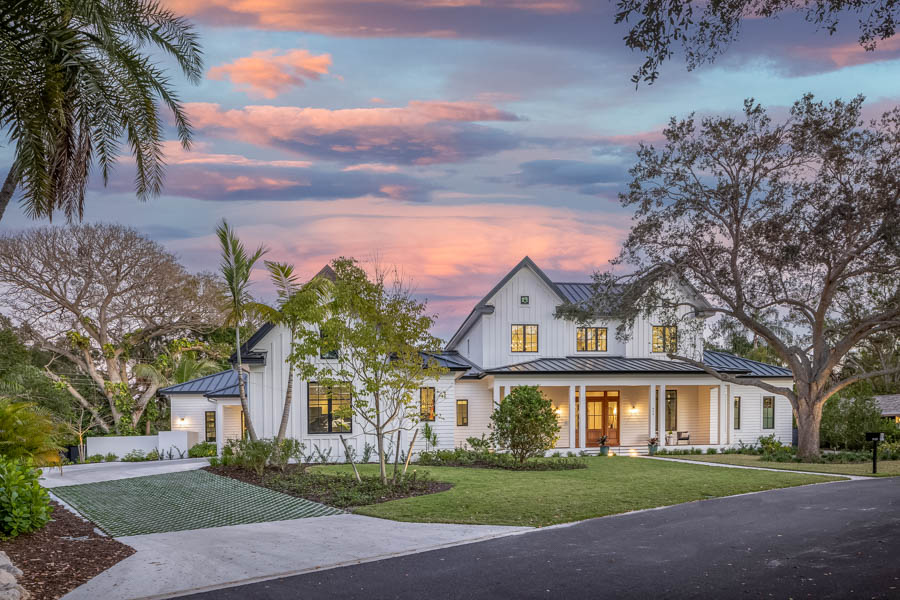Located west of the Trail, Pomelo Place is a historic neighborhood with an eclectic mix of houses from different styles and eras. Single family homes from the 1920s, Spanish colonial architecture and old Florida-style cottages coexist alongside freshly-renovated properties and new construction. It was the ideal neighborhood for Jeff and Corey Talbot, a couple looking to build a home that was uniquely suited to their needs, one where they could put down roots and raise their young family. Jennifer Masters is an interior designer and the owner and founder of AND Masters, a bespoke design firm with a presence in Sarasota and New York City. “Corey Talbot and I are both members of the Junior League of Sarasota and we became close traveling back and forth to St. Petersburg together for a two-day conference,” Masters shares. “In the fall of 2019, she said she would love to see if we could potentially work together on the new home she and Jeff were planning to build. They invited me to the house where they were living at the time and we walked through it together to find out what wasn’t working for them and talked about their dreams and aspirations for the new space.”
Steve Murray is the President of Murray Homes, a family-owned Sarasota business that specializes in building and remodeling custom homes.
“Some friends of ours lived in a house in Pomelo Place and they were looking to move,” Murray says. “When they put it on the market, my wife Bev was the listing agent. The Talbots ultimately bought the property. They decided they wanted to tear down the existing structure on the property and completely rebuild which was where our introduction came in.”
With their designer and builder secured, the Talbots still needed an architect who could help them translate their vision from idea to reality. Murray knew just who to call.
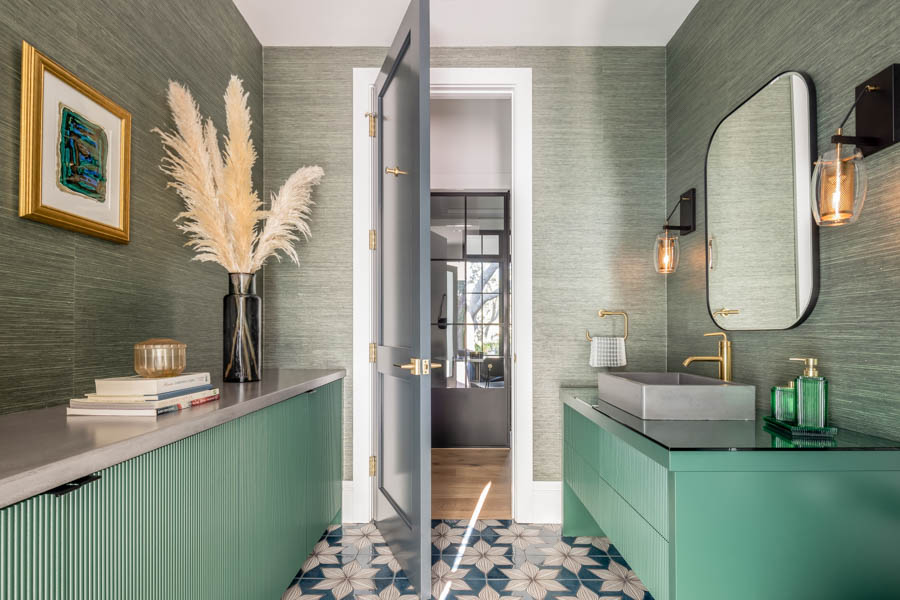
“I’ve worked on over twenty houses with the architect John Potvin over the last twenty years,” Murray says. “I told them that John is a great individual. They got on extremely well with him and obviously signed on with him. They already had Jen Masters on board as interior designer who I hadn’t worked with before, although I had come close a couple of times. I was excited to work with her because she’s very talented. The other person we wanted to bring into the mix was Mike Gilkey, a fantastic landscape architect. And so the team started to form.”
The Pomelo Place neighborhood features a diverse array of architectural styles from many different eras which gave the Talbots the freedom to push their own home design into an unexpected direction. “The contemporary farmhouse style of architecture was something that Corey and Jeff had resonated with early on,” Masters says. “That was definitely a directive to John to take with and run.”
“It’s a little bit of a departure from regular Florida design and that’s great. That’s what I like to do,” Murray adds. “But at the same time, there’s longevity in the design. Fads come and go but classic remains. You have to have classic architectural proportions and detail that allows structures to be timeless, and this house has a completely timeless feel.” While there are nods to the modern farmhouse aesthetic inside the home, the Talbots worked with Masters to blend some of their favorite interior design styles. “They have a love for midcentury modern pieces and they have a love for pieces that are relaxed and comfortable but refined,” Masters says. “They wanted some industrial moments with touches of concrete, and things that were made by hand were also really important to them. The design was really a true blend of a lot of styles, so we had to take all of those styles and find a common thread between them.”
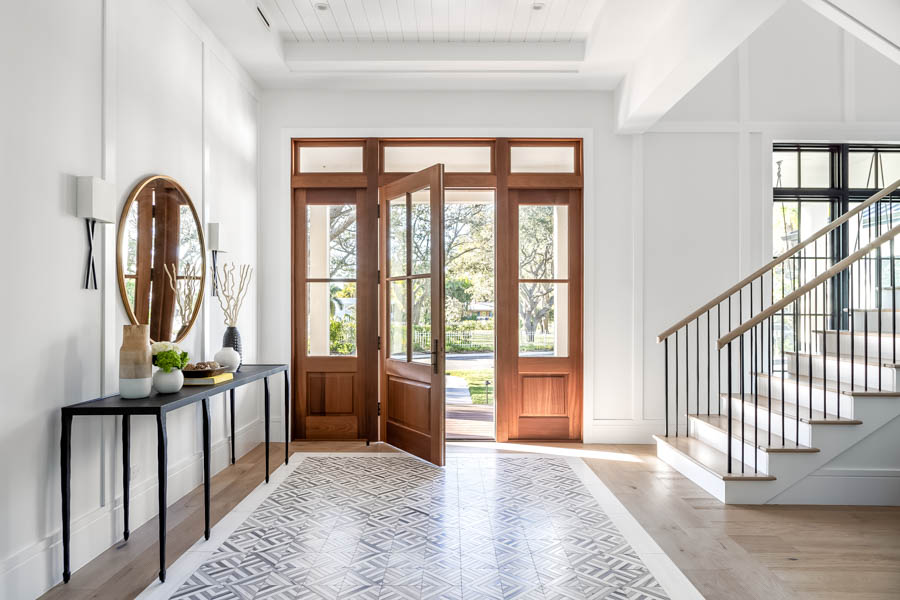
In the foyer, you get a preview of the kinds of details you can expect to find as you move throughout the house. Instead of a rug, Masters had a stone marble mosaic installed in the floor to add a little formality and create a sense of arrival. The foyer leads into the formal living room which is where you first start to see the combining of interior design styles. The metal window frames have an industrial edge, but the transoms keep the space feeling residential instead of urban. Meanwhile the ceiling beams, which are stained a little darker than the white oak flooring that runs through the home, have more of that rustic farmhouse flair. Those beams continue into the kitchen, where design styles continue to mix and mingle.
“The cabinetry is all a modified Shaker-style which speaks to that modern farmhouse look,” Masters explains. “But then we brought in a lime wash on the interior wall that divides the living and dining rooms and incorporated it again over the hood as a reference to the exterior concrete wall. So those are the industrial touches that were introduced in a very subtle way.”
The kitchen has a serene simplicity to it which is made possible by the addition of a butler’s pantry.
“The butler’s pantry was a design decision early in the floorplan. The Talbots didn’t have a formal dining space in their plan, nor did they want one, and so their dining area is very open to the kitchen,” Masters says. “We discussed lots of different options on how to keep the kitchen clean and uncluttered and this was our solution.”
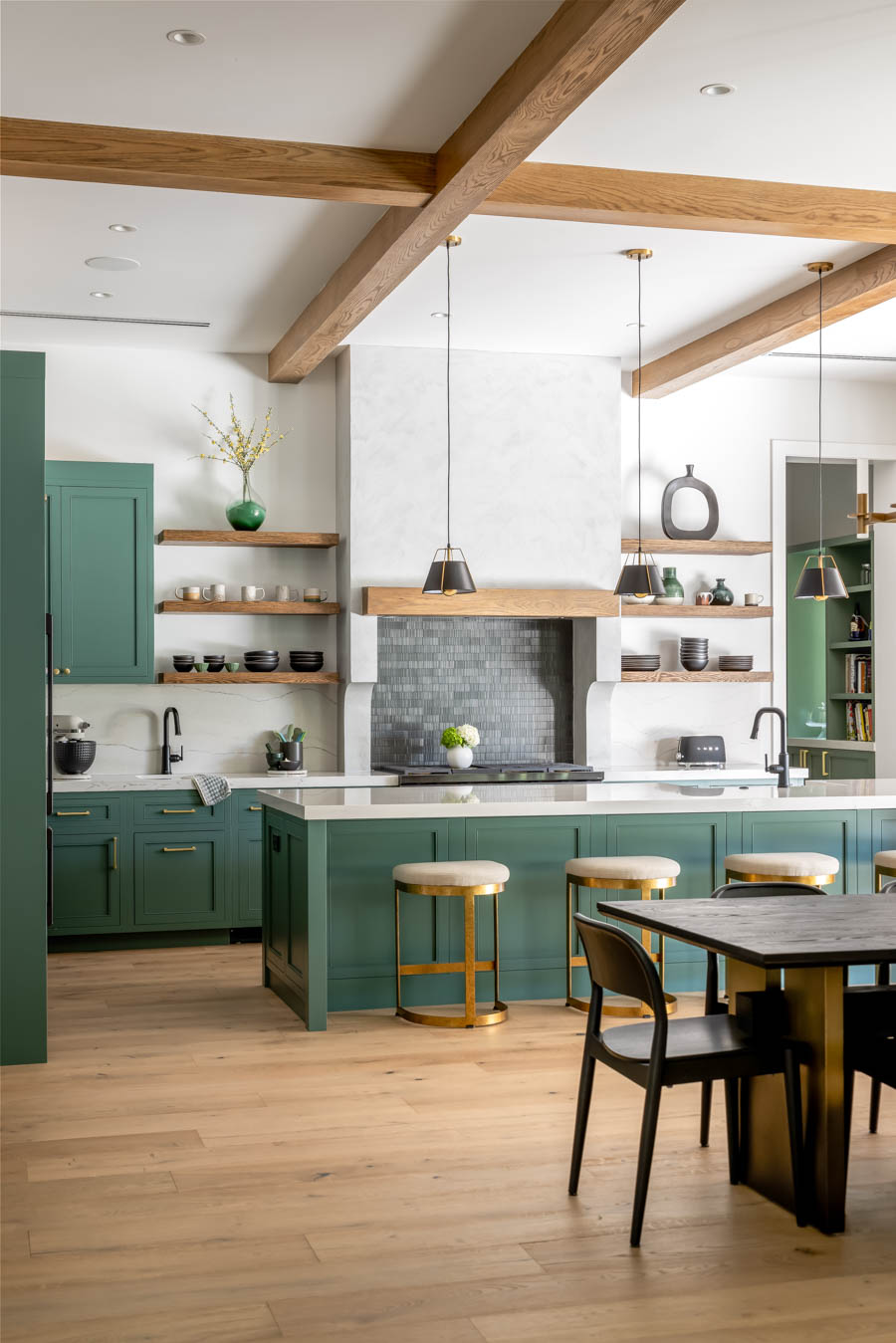
“We’re doing more and more butler’s pantries these days,” Murray adds. “They allow for the communal part of the kitchen to be enjoyed while the clutter can just be hidden away. For a room that’s not necessarily meant to be seen, the butler’s pantry is a visual feast. The narrow room is lined with shelves and cabinets that are a few shades darker than the cabinetry in the kitchen. Corey had bookmarked a photo of a cafe with floors she loved, and that image served as the inspiration for the custom mosaic tile here. Wall-mounted brass light fixtures added character and related to that cafe feel.
As you step out of the butler’s pantry and into the kitchen, you’ll see an outdoor kitchen and dining area. The Talbots may not have a formal indoor dining room, but the outdoor one is undeniably a showstopper. Like the foyer this space featured a built-in rug element, this one crafted from ipe wood. The glass walls on either side and glass-backed fireplace at the far end, create the sense that you are truly immersed in nature. But the most breathtaking architectural element is the vaulted ceiling.
“There’s no second floor on that part of the house, so it allowed us to be very high and very steep in pitch. It really was an area where we could do what we wanted in order to achieve the look they were looking for,” Murray says. “I think it’s one of the best outdoor spaces we’ve ever built because of the lack of constraint that we had that gave us the ability to have this high, peaked Cathedral ceiling.”
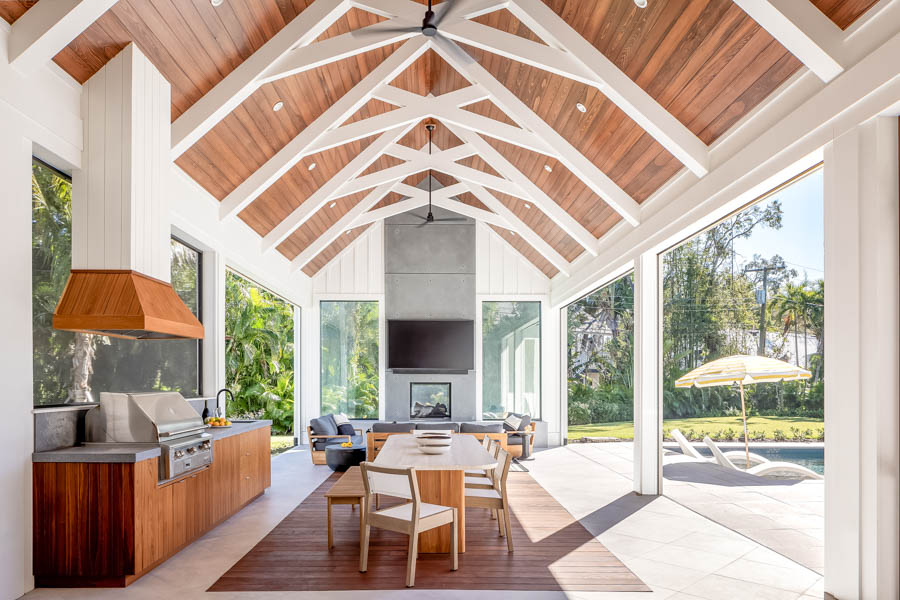
Everywhere you turn in this house, you’ll find interesting and unique details that tell the story of the people who live there. The master bedroom is anchored by a handmade brass bed that will age and develop a patina over time. Corey’s office has layers of visual interest, from the whimsical wallpaper to the starburst pattern in the ceiling. Hand-glazed concrete tiles add pops of pattern and color to the upstairs powder room. These hyper specific details are expressly tailored to the Talbots’ taste, something that’s not always possible when building a new home.
“This house is designed for their family to live in for the next 20 or 25 years, which is always lovely for us. When someone is only going to live somewhere for a year or two you don’t really feel that they’ve got 100% of their soul into the design. But when someone says we’re going to live there for 25 years and the kids are going to grow up here, it changes how you design.” Murray says. “The Talbots knew how they wanted to live in the house and how it was going to operate, and so every area was specific to how they wanted it for them, as opposed to having one eye on resale. So that was great, because it took away compromise. Compromise is a terrible thing for design because you end up not doing anything very well. When you take that out of the equation, you’re then dealing 100% with personal choice and the right way to do it for you and you end up with a better product. All the houses that I’ve been involved with that have taken this very singular approach to design and interior design and finish, they have been inherently better by the feel of what the product is. They take on a personality of their own. I think that was achieved in this house.”
IN MEMORY OF JOHN POTVIN
Over the span of four decades, architect John Potvin transformed the landscape of Sarasota with his unique perspective and artistic flair. The Talbot home was the last project of his storied career. “John had just an incredible energy to him where he was just always the biggest personality in the room.” says Steve Murray. “Unfortunately, after he had designed this home, he was diagnosed with pancreatic cancer and didn’t have very long to live and passed away,” Murray continues. “He was a good friend of mine and he was a fantastic architect and a great colleague. Obviously when you build over twenty houses with one guy you get to know them. You get to know their architecture and the kind of vibe he put into the design and the kind of energy that he had all the way through the process. All of that survives now through the structure and through the actual building process. We definitely feel that he’s still here because we see him all the time and interact with him all the time through his work.”





